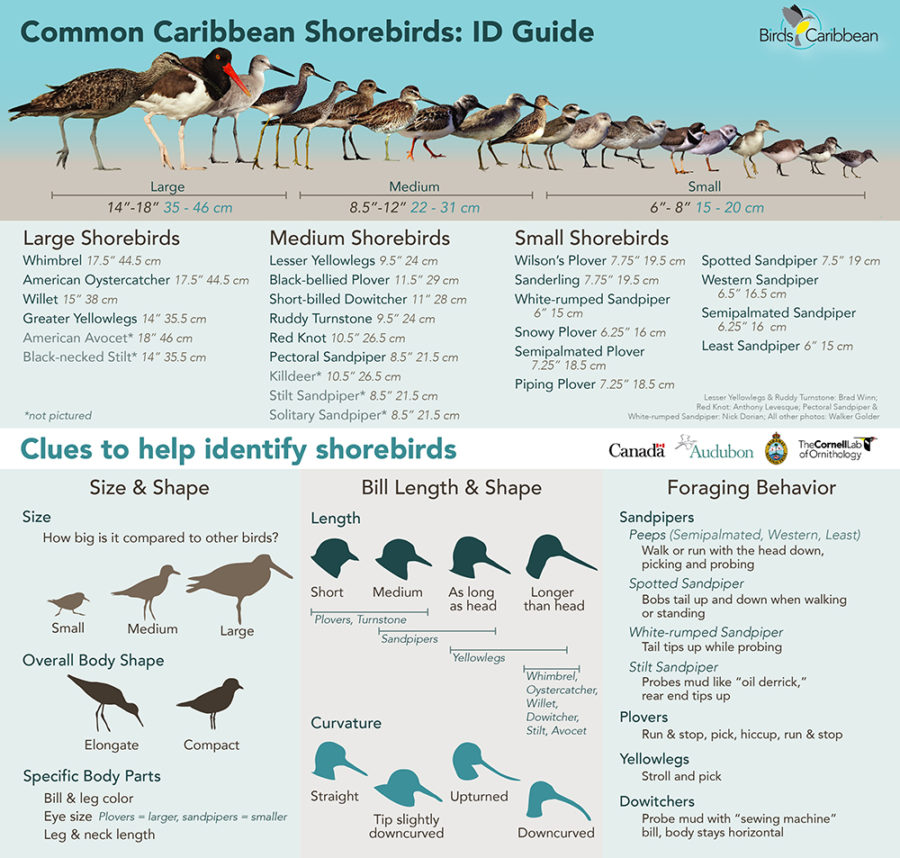Celebrate World Migratory Bird Day (WMBD) with us in our virtual “Birds Connect Our World” edition! Have fun learning about a new migratory bird every day. We have colouring pages, puzzles, activities, and more. Download for free and enjoy nature with your family at home. This week we are also celebrating World Shorebirds Day and Global Shorebird Count (3 to 9 September).
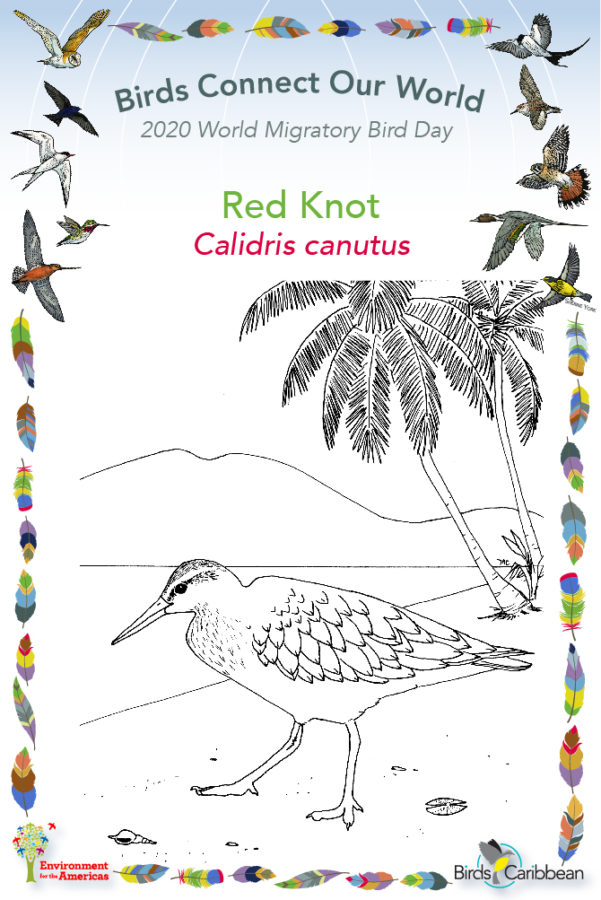
Migratory Bird of the Day: Red Knot
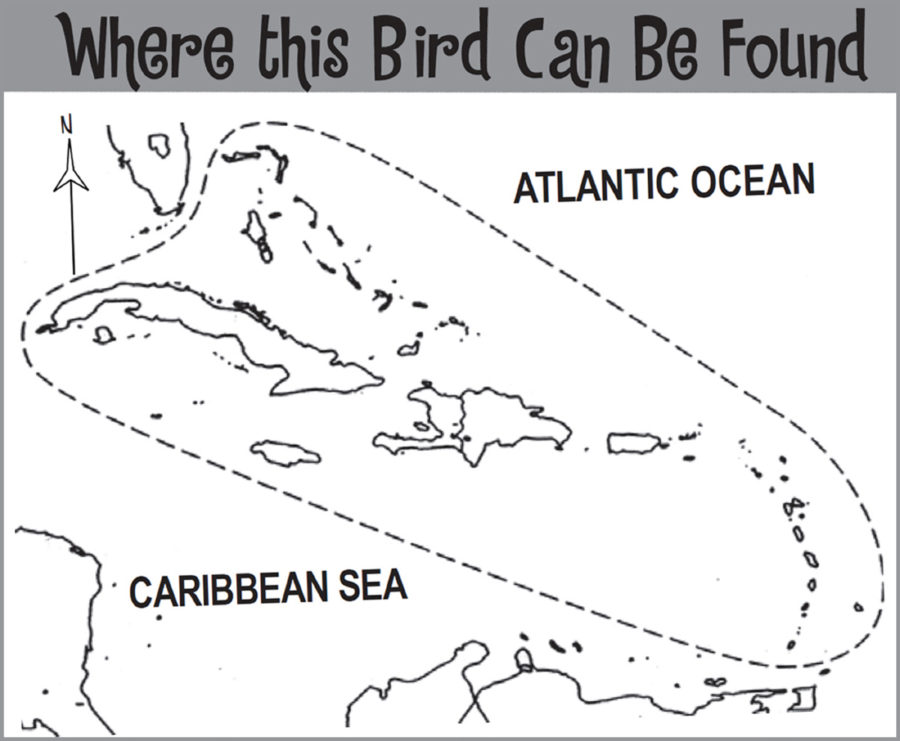 Depending on the time of year you see this shorebird its name will either make perfect sense or leave you confused. During the spring and summer it is bright rusty red on the chest and belly. But, in the autumn it gradually replaces its feathers. By winter it becomes white underneath and pale grey above. This medium size shorebird, is chunky looking with a mid-length beak (for a shorebird).
Depending on the time of year you see this shorebird its name will either make perfect sense or leave you confused. During the spring and summer it is bright rusty red on the chest and belly. But, in the autumn it gradually replaces its feathers. By winter it becomes white underneath and pale grey above. This medium size shorebird, is chunky looking with a mid-length beak (for a shorebird).
Red Knots are most likely to be in the Caribbean during the autumn and are more common on some islands, like Barbados. They stop on their way to wintering areas much further south. You are most likely to find Red knots on the coast, in tidal sandy or muddy areas. They like to hang out in groups together and with other species of shorebird. They feed mainly on small mollusks in the winter, but also eat marine worms and small crabs.
Red Knots breed in the far north, in the Arctic. They can spend the winter as far south as the southern most tip of South America.This means they make some amazing migratory journeys of tens of thousands of miles overall! Red Knots gather in large groups in some places during autumn and winter; this makes them vulnerable to threats like sea-level rise and hunting. Learn more about this species, including its range, photos, and calls here.
Colour in the Red Knot!
Download the page from Migratory Birds of the West Indies Colouring Book. Use the photos below as your guide, or you can look up pictures of the bird online or in a bird field guide if you have one. Share your coloured-in page with us by posting it online and tagging us @BirdsCaribbean @WorldShorebirdsDay #WMBD2020Carib #WorldShoreBirdsDay
Listen to the call of the Red Knot
The Red Knot is often silent but sometimes makes a soft “chunt chunt” call
Puzzle of the Day
Click on the images below to do the puzzles. You can make the puzzle as easy or as hard as you like – for example, 6, 8, or 12 pieces for young children, all the way up to 1,024 pieces for those that are up for a challenge!
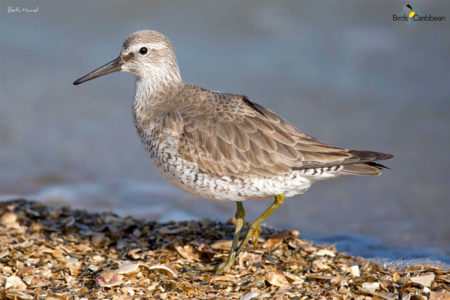
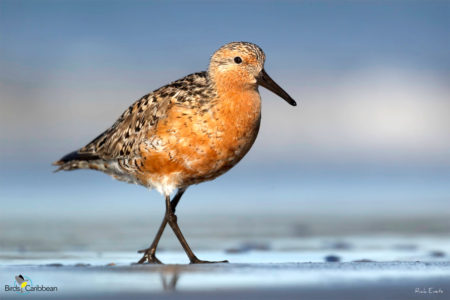
Activity of the Day
FOR KIDS AND ADULTS: Shorebirds are one of the most difficult groups of birds to learn to ID, but with a little practice and time in the field, you will soon be able to ID the most common species. We’ve put together some helpful tips of things to look for. You can download a PDF of this file here for printing. For long-term use in the field, print on card stock and laminate.
FOR KIDS AND ADULTS:
- Visit a pond, wetland or nearby beach and see how many different shorebirds and waterbirds you can find and identify. Use a bird field guide or the FREE Merlin bird ID app to help you identify the birds you are seeing.
- If you’re able, do a count of the species that you see – learn more about counting waterbirds and the Caribbean waterbird Census at this link. Learn more about World Shorebirds Day and the Global Shorebird Count (September 3 to 9, 2020) at this link.
- Enjoy the videos below of Red Knots feeding on the beach. In the first you will notice traces on the red plumage that give this birds its name, this bird is still in between breeding and winter plumage. In the second video the birds look grey above and pale below, they are in full winter plumage.
- Visit MigratoryBirdDay.org for many more free activities and resources to learn about migratory birds, their threats and conservation actions you can take.

